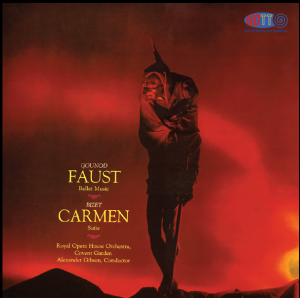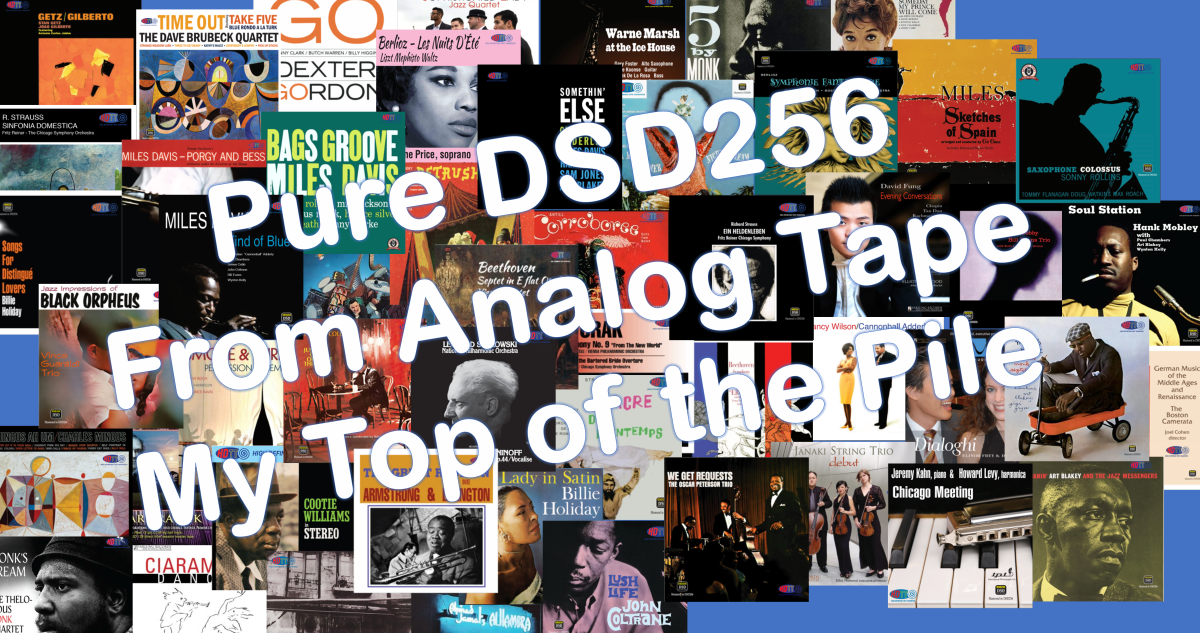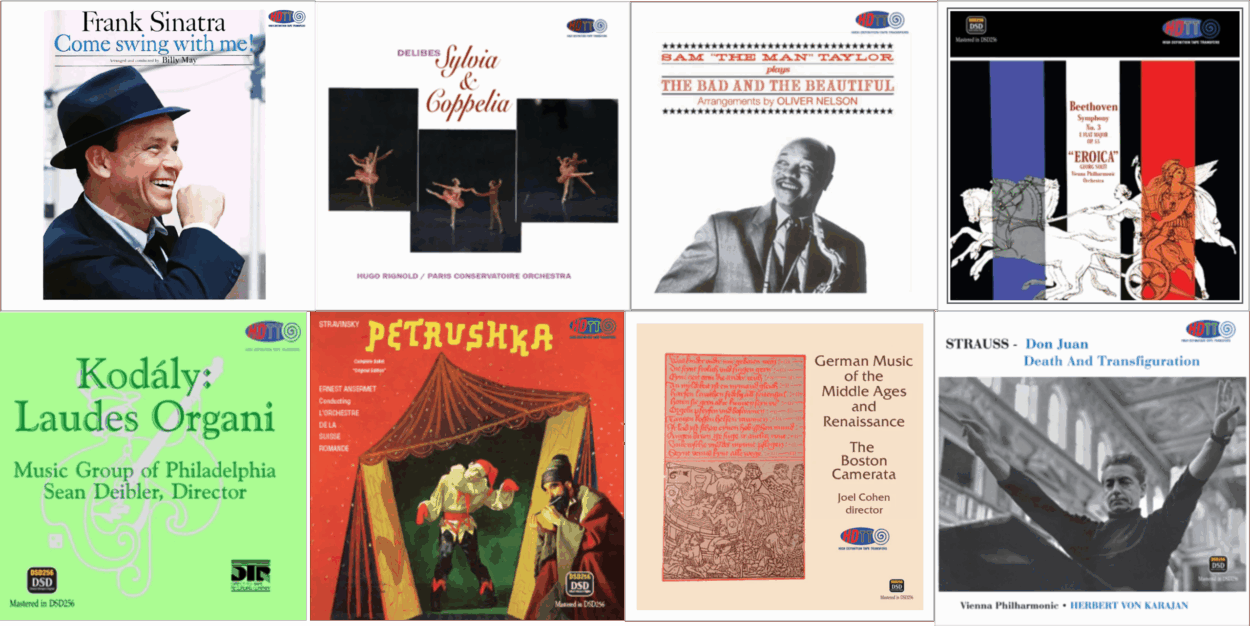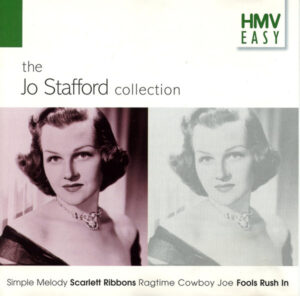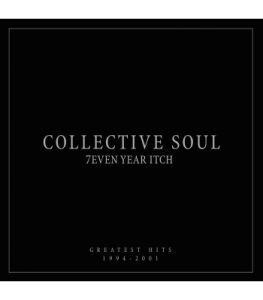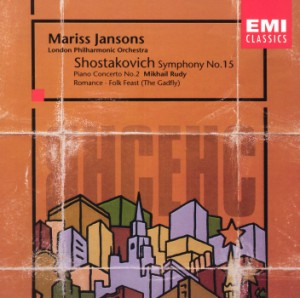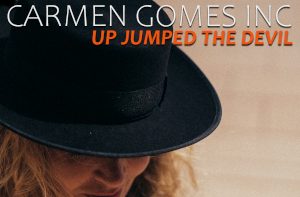I've written here and there about my preference for listening to 32-bit PCM versus 24-bit PCM files (either 352.8kHz or 384kHz). When there is no Pure DSD256 file available because the file has been post processed in PCM, these 32-bit files have become my preferred alternative for sonic enjoyment, even over the DSD256 files that have been PCM post-processed. And I wish more labels recording and releasing in DXD would also make the 32-bit version of their files available—after all, the 32-bit version (or in some cases a 64-bit version) is the internal file format used in their editing software. The 24-bit file (DXD) is a dithered down-sampling of that master (in most cases).
Why do I prefer the 32-bit file? As Ann says after a recent comparison, "The 32-bit file has better fidelity than the 24-bit file. It is less veiled and the timbre is more accurate."
This outcome has held consistent across many comparisons I've made, across multiple record labels (e.g., Channel Classics, HDTT, Just Listen Records, Navis Classics, Sound Liaison). The 32-bit files simply sound more open, with greater clarity, and with more accurate reproduction of timbre.
My standard of excellence is Pure DSD256, with no PCM processing. But, if PCM processing has been applied in post, or if the recording is originally a PCM recording (viz. DXD), my experience has been that the 32-bit version simply sounds better than the either the 24-bit file or the PCM processed DSD256 file. It's a half-step closer to the sound I love from a Pure DSD256 recording.
At least on my primary system, with my DAC (a Playback Designs MPD-8)*.
But wait, you say... The Playback Designs MPD-8 accepts only 24-bit input files, so how can this be?
I don't know the answer. I've talked with the Playback Design's Andreas Koch about this and he has a theory but no firm answer. His theory is that the mastering software (most typically Merging Technologies' Pyramix Workstation and Album Publishing software) does some dithering when converting from the internal 32-bit file to the 24-bit output file. And, he theorizes that, perhaps, more damage is done to the file in this dithering process than in the simple truncation applied in the ASIO input application used by the DAC. Dithering versus truncation, hmmmm? Well, all I can tell you is what I hear. Even though my DAC accepts only 24-bit input, the truncated 24-bits from that 32-bit master file consistently sound better, as I've described above.
This 32-bit versus 24-bit versus topic was brought to mind yesterday when Bob Witrak emailed me to ask if he'd ever provided me with a 32-bit file from one of his albums as I'd once requested. No, he hadn't. So he said he would do so on this next project on which he was working. And wonder of wonders, this morning I get a link to his new transfer of the great RCA Living Presence album Gounod Faust/Bizet Carmen Suite with Alexander Gibson conducting the Royal Opera House Covent Garden Orchestra. Recorded by Kenneth Wilkinson in Kingsway Hall, this is one of the legendary recordings Wilkinson made under Decca's contract with RCA. I've known it for decades in both original LP and in a variety reissues including the excellent 4-LP 45rpm release from Classic Records. This new release from HDTT is, by the way, absolutely terrific! It comes from a 2-track 15ips tape and the clarity and dynamics are marvelous.
Gounod Faust/Bizet Carmen Suite with Alexander Gibson conducting the Royal Opera House Covent Garden Orchestra. HDTT 1960 2024 (DXD, DSD256) HERE
This is a marvelous recording that should be in every classical music lover's music library. Bob made available to me both the 32-bit files and the 24-bit files so I could compare. And, yes. All the same differences were readily apparent. Ann listened as well and we agreed point for point. The 32-bit files were our clearly preferred version of the recording.
What about the DSD256 file, you ask? Well, I'm glad you did. To my ear, the DSD256 is not quite as clean and resolved as the 32-bit file from which it is derived. It has gone through one more format conversion step and conversions from PCM to DSD and vice versa always leaves a mark. And, Pyramix's PCM to DSD conversion algorithms are just not that good compared to other manufacturers' algorithms currently. In fact, I prefer the Pyramix 24-bit DXD file to the Pyramix outputted DSD256 file for these reasons. The Playback Designs DAC just seems to do a better job converting from DXD to DSD256 (which it does internally for all files) than does Pyramix. But, Ann disagrees. She prefers the sound of the DSD256 file listening at the same time with me. She says it sounds more open, with more hall sound, than the 32-bit PCM file. I don't agree. We have different listening impressions!
I asked Bob if Pyramix could export the DXD 24-bit file truncated with NO DITHER from the 32-bit file. This is how I'm listening to the 32-bit file in my system and I'm curious if Andreas may have intuited the answer to my conundrum. Bob could and did. This 24-bit file truncated with NO DITHER is also added for you to download and compare.
But don't take my word for any of this. Make your own comparison. With Bob's permission, I have placed on the Positive Feedback server four alternate versions of Track 8, "Funeral March Of A Marionette" from Gounod's Faust. The track is 4.35 minutes and I've given you all of it, four times over:
32-bit: Track 8, "Funeral March Of A Marionette"
24-bit: Track 8, "Funeral March Of A Marionette"
24-bit TRUNCATED, NO DITHER: Track 8, "Funeral March Of A Marionette"
1-bit DSD256: Track 8, "Funeral March Of A Marionette"
All four files above come from the 32-bit PCM master file. Bob's process was to transfer the 15ips tape using DSD256 via a Merging Hapi Analog to Digital Converter. This DSD256 file was post-processed on the Pyramix Workstation in a DXD project at 32-bit 352.8kHz. The resulting PCM edit master was then transferred/converted/rendered in Pyramix Album Publishing to 32-bit and 24-bit 352.8kHz files and to a DSD256 file. These are what I have placed on the Positive Feedback server for you to sample from the download links above.
Please post a comment below about what YOU hear in YOUR system with these sample files. Which you prefer for best sound quality with your DAC? And WHAT DAC are you are using? Because the DAC makes the difference.
For example, I prefer the 32-bit file on our primary system with the MPD-8. But I agree with Ann's preference for the DSD256 file on her office system using a chip-based DAC (a Teac 501); the DSD256 file sounds better than the PCM files with that DAC. Does it sound as good as what we hear on our primary system? No—the primary system is far superior. Different DACs, different outcomes. So, please make your own comparisons!
Downsides to the 32-bit files? Well, they have to be WAV files because FLAC does not support 32-bit. This means 1) they are large files, similar to DSD256 file sizes, and 2) while the WAV format can contain some metadata, the metadata capacity is more limited than with FLAC.
A question still to explore: Is what I'm hearing only a function of how Pyramix processes the files it outputs when using Pyramix Album Publisher? Will a similar comparative result show its head when listening to files processed with HQPlayer Pro (NativeDSD files) or Weiss Engineering Saracon (TRPTK files from their own download site) or some other software? Hmmm... This is what I've heard over the past year or so, but perhaps another trial is in order. Time to check in with Brendon Heinst at TRPTK and Tom Caulfield at NativeDSD.
Brendon Heinst has been way ahead of my thoughts in this regard. Back in October of 2022 he was already experimenting with different software algorithms for mastering his TRPTK albums. He was then experimenting with 24-bit versus 32-bit versus dithering, no dithering and different dithering. You may find his blog article, HERE, an informative read. He no longer lets Pyramix touch any format conversion. He renders with Weiss Engineering Saracon. And his 24-bit Saracon files sound quite wonderful, but I still download his 32-bit Saracon rendered files.
In the end, I don't care about formats, bits, numbers or software. I care about the ultimate sound quality. It's just that I have to get down into the weeds sometimes to sort out what I should be searching for to download. And because not everyone has access to make some of these comparisons, I write to share my experiences.
So, I heartily suggest you do some comparative listening! I will be interested to read your comments about what you're hearing.
* I've heard the same from several friends with DACs from other manufacturers using Field Gate Programmable Arrays (FGPA) rather than integrated DAC chips, so I know I'm not isolated in this regard.




